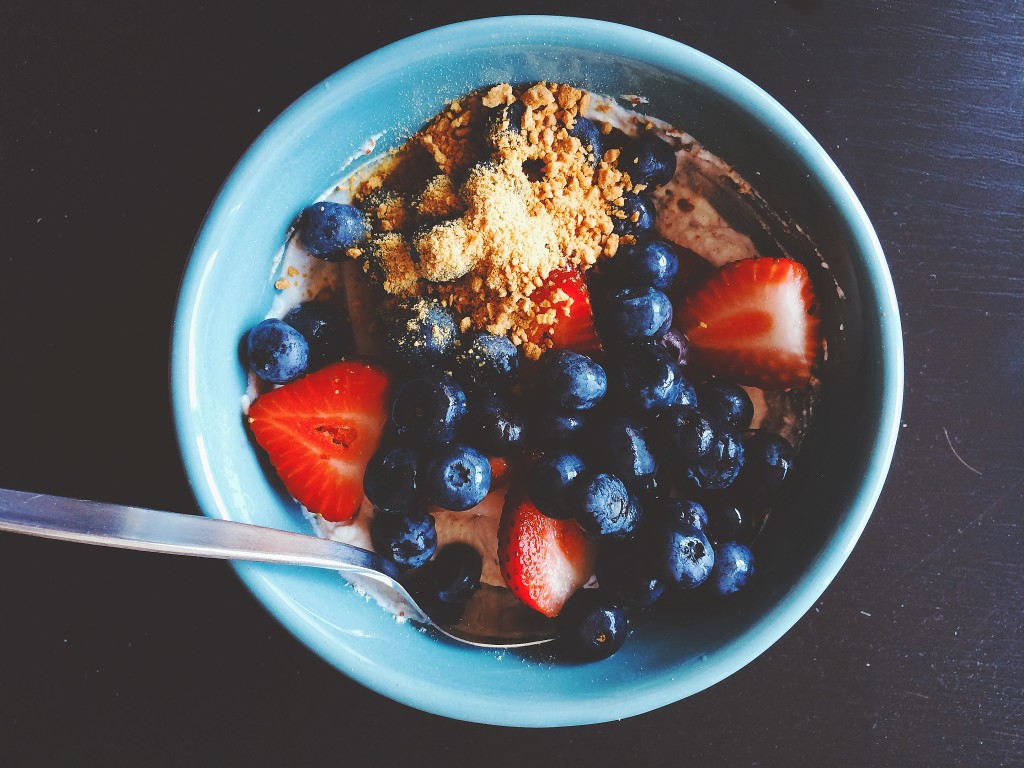With the official start of summer just around the corner, a lot of people are revisiting their health and fitness goals and thinking about how to change up their diets to get where they want to be. Low-carb diets are one of the most popular eating plans right now, and the approach I certainly get the most questions about.
There are varying degrees of low-carb diets. For example a ketogenic diet, in which 60-75% of calories come from fat (a 4:1 or 3:1 ration of fat to carbs and protein) is generally much lower in carbs than, say, a Paleo diet or a Mediterranean-style diet, which do not have set carb ratio guidelines.
While a low-carb diet may not be the best fit for everyone, if it’s something you’re interested in, I know I’d certainly sleep better knowing I’d given you some basic info to work with.
Here are the basic things I talk about with my clients when they want to go low-carb.
Get clear on what “counts” as a serving of carbs
A serving of carbohydrate is equivalent to about 15 grams. That’s going to look different depending on whether you’re getting your carbs from grains, beans, starchy veggies, fruit, or dairy products. Here’s a post that breaks it down in more detail.
Decide how low you want to go and how you want to track
You also want to think about how low you want to go and what approach you want to take. For example, are you into carb counting (aka counting exchanges of 15-gram servings using the diabetic exchange list) or tracking your macros (a method that involves focusing on the ratio of protein, fat, and carbs)?
If you decide to do carb counting, I recommend taking a few days before making changes just to see what your current intake is like to help you figure out a doable goal. For example, if you’re getting around 200 grams a day, maybe 150 or 100 is a good goal. I would caution against going too low, though-less than 50 or even 75 can be hard to sustain and may make you feel foggy, fatigued, and weak.
If you decide to track macros, figure out what your goal ratio is. For example, you could try aiming for 30 percent of your intake from carbs, 30 percent from protein, and 40 percent from fat. Taking into account that carbs and protein have 4 calories per gram and fat has 9 calories per gram, depending on your calorie goal, that could help you figure out your target. Logging your food into a tracker like a Fitbit or an app can help you see whether you’re in balance with your goals and what ratio feels like a good fit for you.
If all that sounds like too much math, another approach you could take is deciding how many carb servings you want to have. For example, maybe one carb serving per meal feels like a good fit.
Spread it out
Whatever you choose, spreading out your carb intake through the day is likely to help you feel more balanced, but pay attention to whether there are certain times of day you feel you need them more than others. For example, if you can’t do a very low-carb breakfast, don’t force it. If you need those two pieces of toast instead of one, go for it, and maybe consider trimming carb portions at a later meal where it doesn’t feel like as much of a deal-breaker to your body.
Also, don’t think that less necessarily equals more when it comes to carbs. Pay attention to how you feel at a certain level of intake.
Cover Your Nutritional Bases
Whichever approach you choose, you want to make sure not to miss out on fiber. Some good sources are leafy greens and other non-starchy veggies, nuts, and seeds. Avocados are also packed with fiber. Fruit and whole grains also have a lot, so prioritize berries and complex carbs like sweet potato, beans, oats, and quinoa over simple carbs like refined flours, white rice, and white potatoes when you are having carbs.
An important facet of low-carb diets is higher protein and higher fat, so just be mindful of portion sizes when filling your plate. You also,want to emphasize heart-healthy fats like avocados, nuts, and plant-based oils. Know that a little goes a long way still. Leaner proteins like chicken, as well as eggs and fish are better choices than red and processed meats.
Drinking plenty of water helps keeps things moving through the GI tract and can help alleviate digestive issues like constipation or bloating that may occur if a low-carb diet is a drastic change for you. If you’re skipping dairy or don’t consume many other fermented foods like yogurt, kefir, sauerkraut, kimchi, or miso, consider a probiotic supplement to promote regular digestion.
And now for the disclaimer part…
If you’re noticing persistent discomfort or just don’t feel right on a low-carb diet, talk with a dietitian to come up with a customized plan or book a pan appointment with your doctor to discuss and rule out potential underlying conditions.
Have you ever followed a low-carb diet?
This has been another installment of the Running with Spoons Thinking Out Loud link party, where randomness is the name of the game. Thanks to Amanda for hosting.

*
*
**This post may contain affiliate links.


